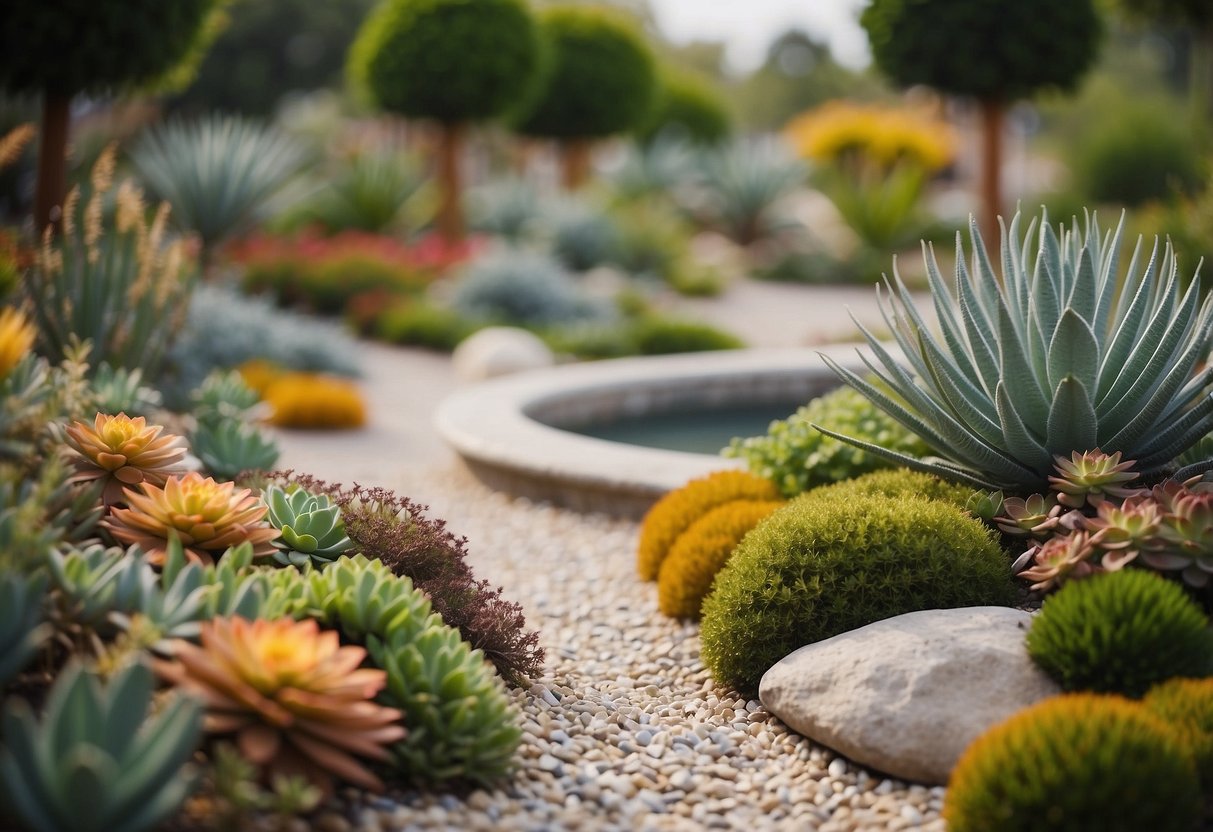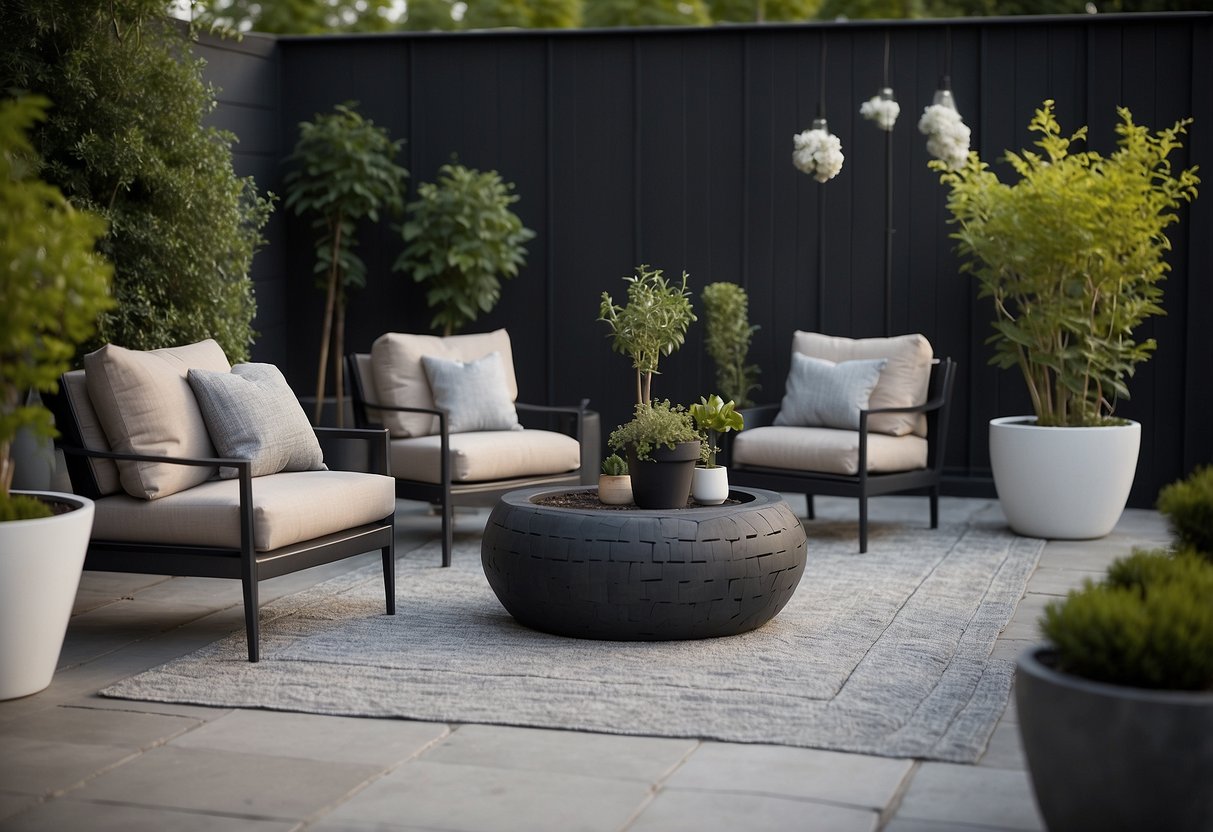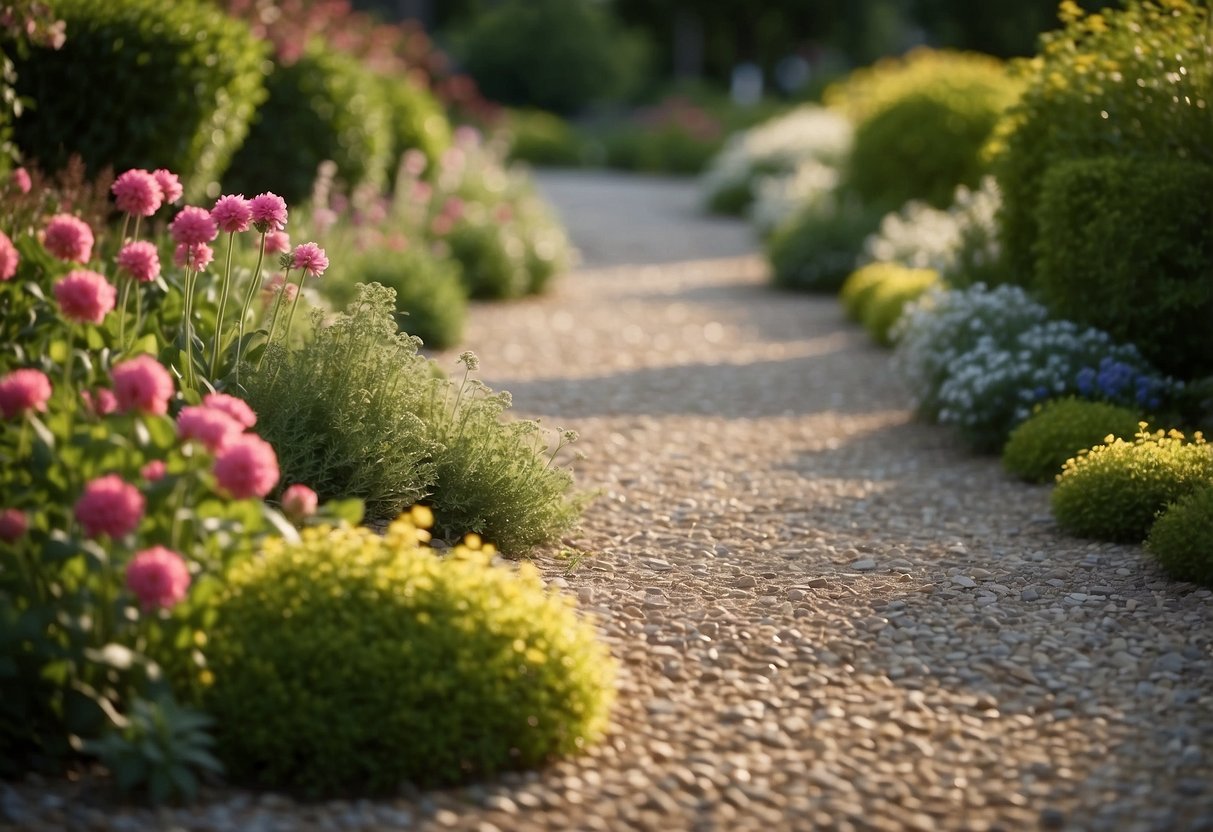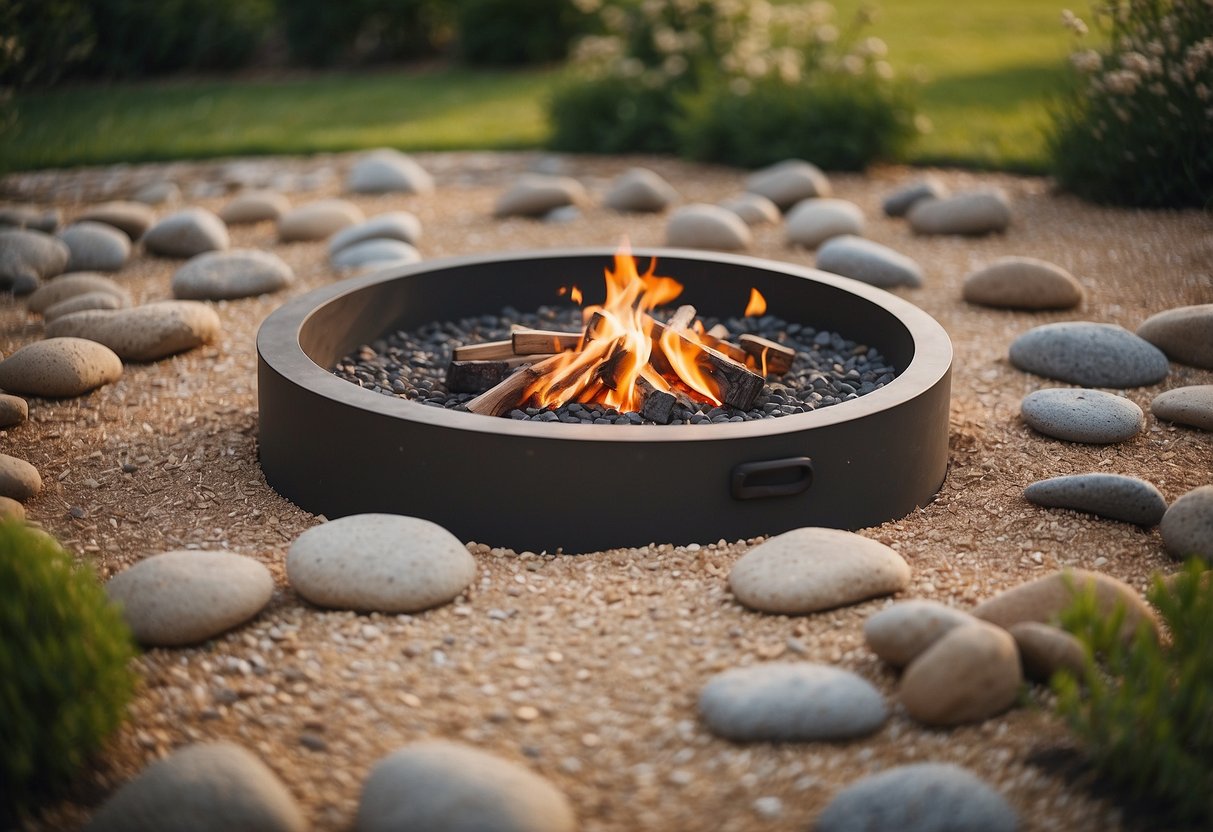Gravel Garden Ideas: Transform Your Outdoor Space
Gravel gardens are a fantastic way to create a beautiful and low-maintenance outdoor space. They are ideal for dry climates and those who want a more sustainable garden design. How can you transform your garden using gravel? Whether you have a small backyard or a larger area, gravel gardens offer flexibility and versatility.

In a gravel garden, you can combine various plants, rocks, and other elements to achieve a unique look. These gardens can help conserve water and reduce maintenance time. From choosing the right type of gravel to incorporating different plants, there are countless ways to make your gravel garden both attractive and functional.
1) Succulent Display

A succulent display is a great way to add texture and color to your gravel garden. You can plant different types of succulents together for a striking visual effect.
Mixing species like Echeveria, Aloe, and Sedum can create a cohesive design. Try placing them between larger rocks for a natural look.
Succulents are low-maintenance, needing little water, which makes them perfect for a gravel garden. Arrange them in groups or mass plant a single species for impact. For more tips, check out these succulent rock garden ideas.
2) Zen Garden

Creating a zen garden can bring peace and calm to your space. One popular feature is raked gravel or sand, which represents water. You can rake it into patterns to create “waves.”
Adding natural elements like rocks and pebbles enhances the tranquil feel. You might also consider adding a stone pathway or a small bridge for visual interest.
Plants like lavender and Russian sage can add subtle color and soft textures to your garden. Their soothing hues fit perfectly with the serene environment you’re aiming to create.
3) Mediterranean Style

A Mediterranean garden embraces warmth and simplicity. You can use gravel as mulch to keep plant roots dry and reduce water use. It also gives a clean, natural look.
Consider incorporating plants like lavender and rosemary. These are fragrant and drought-tolerant. Olive trees are also a good option for adding a touch of the Mediterranean to your garden design.
Dry stone terraces add an authentic feel. Using locally sourced stones is eco-friendly and durable. This type of hard landscaping breaks up the space and creates a charming backdrop.
4) Decorative Gravel Paths

Gravel paths can give your garden a charming and rustic look. They are versatile and can be shaped to fit any garden layout.
You can line the paths with perennials such as Oriental Poppies and Salvia for added color and texture. These plants are hardy and will thrive alongside a gravel path.
Gravel paths are not just pretty; they are also practical. They are easy to maintain, durable, and can last over 10 years with proper care. They also help with drainage, keeping your garden mud-free after rain.
For more ideas, check out these gravel garden path ideas.
5) Gravel Mulch for Flower Beds

Using gravel as mulch in your flower beds can be a game changer. Unlike organic mulch, gravel doesn’t decompose, so you won’t have to replace it every year. It helps retain soil moisture, reduces weeds, and keeps the soil temperature stable.
Gravel mulch looks neat and tidy. It comes in various colors, letting you match it to your garden’s style. If you choose pea gravel, it’s soft enough to walk on, making it perfect for paths around your flower beds.
If you want to learn more, check out these pea gravel flower bed tips.
6) Modern Gravel Patio

A modern gravel patio can transform your backyard into a sleek, stylish space. Using clean lines and minimalist designs, you can create a contemporary look.
Choose angular gravel in shades of gray or black to match the modern aesthetic. Edging the patio with materials like metal or concrete adds a neat, finished touch.
Furniture should also be modern. Think of simple outdoor lounges or metal chairs. Adding some modern planters with succulents or ornamental grasses completes the look. Your patio will be a chic, inviting place for relaxation and socializing.
7) Low-Maintenance Shrubs

Planting low-maintenance shrubs in your gravel garden can save you lots of time and effort. One great choice is lavender. It’s drought-tolerant and adds a pop of color.
Another option is juniper. Juniper shrubs are hardy and need very little watering once established. They also offer year-round greenery.
Spirea is also a good pick. These shrubs produce beautiful blooms and thrive with minimal care. They can handle different soil types and weather conditions well.
Selecting these shrubs can keep your garden looking good without much work.
8) Gravel Driveway

A gravel driveway can be both practical and stylish. It’s a great way to welcome guests to your home.
Gravel helps with drainage and prevents water from pooling. You can also have different styles, from curved driveways to straight ones.
You can edge your driveway with plants or bricks. This can add a neat, clean look to your yard. Check out these gravel driveway ideas for inspiration.
9) Gravel Water Feature

A gravel water feature adds a peaceful vibe to your garden.
You can use gravel to line a small pond or fountain, creating a natural look.
Try placing smooth river rocks among the gravel to enhance the effect.
This setup not only looks great but also reduces maintenance by keeping the area clean and tidy.
Learn more about these low-maintenance ideas from The Spruce.
10) Outdoor Fire Pit Area

An outdoor fire pit area can be a cozy and inviting addition to your gravel garden. It’s a perfect spot for gathering with friends and family on cool evenings.
Consider using pea gravel for easy installation and maintenance. Pea gravel also provides a smooth and comfortable surface to walk on.
You might want to include drought-tolerant plants like succulents and cacti around the fire pit. They add texture and visual interest without requiring much water.
Benefits of Gravel Gardens

Gravel gardens offer unique benefits such as being low maintenance and water-efficient. These advantages make them appealing for gardeners looking to save time and resources.
Low Maintenance
Gravel gardens require less upkeep compared to traditional gardens. Weeds find it harder to grow through gravel, so you spend less time on weeding. Using a weed barrier fabric beneath the gravel further reduces the chances of weed growth.
Gravel helps keep your garden looking neat. You don’t need to replace it as often as mulch or other organic materials. This means fewer trips to the garden center and less effort spreading new materials.
Gravel also reduces pests. Unlike organic mulch, it doesn’t provide a habitat for insects or rodents. This results in fewer issues with pests eating your plants or invading your garden space.
Water Efficiency
Gravel gardens conserve water by reducing evaporation. Gravel acts as a protective layer that keeps the soil moist for longer. This means you won’t need to water your plants as frequently, saving both time and water.
When it rains, water easily seeps through the gravel into the soil below. This creates a natural irrigation system that benefits your plants. Plus, using gravel around raised garden beds helps direct runoff, keeping pathways dry and mud-free.
Plants like cacti and succulents thrive in gravel gardens. These plants naturally require less water, and the gravel helps retain the minimal moisture they do need. This makes gravel gardens ideal for dry climates or areas with watering restrictions.
Design Tips for Gravel Gardens

Gravel gardens can be both beautiful and practical. By choosing the right type of gravel and carefully incorporating plants, you can create a stunning and low-maintenance outdoor space.
Choosing the Right Gravel
Selecting the right gravel is crucial for the look and function of your garden. Go for gravel that complements your overall garden style and the plants you choose. For pathways, consider small, round pebbles which are comfortable underfoot. For garden beds, larger, angular gravel can deter weeds.
Gravel color also matters. Light-colored gravel can brighten up shady areas, while darker hues can make the space feel more intimate.
Use a weed barrier fabric under the gravel to prevent weeds from popping through. Keep in mind that you’ll need about 2-3 inches of gravel to create a solid surface.
Incorporating Plants
Choose drought-tolerant plants like succulents or lavender that thrive in gravel gardens. These plants not only look great but also require minimal water, making your garden more sustainable.
Arrange plants in clusters for visual impact. Use taller plants as focal points and fill in with lower-growing plants. This adds depth and interest.
Mulch around plants with a thin layer of gravel to help retain moisture and reduce weed growth. Remember to leave some space around the plant stem to prevent rot.
Use stepping stones or pavers to create pathways without disturbing your plant arrangement. This way, you can easily navigate your garden while keeping plants safe.







